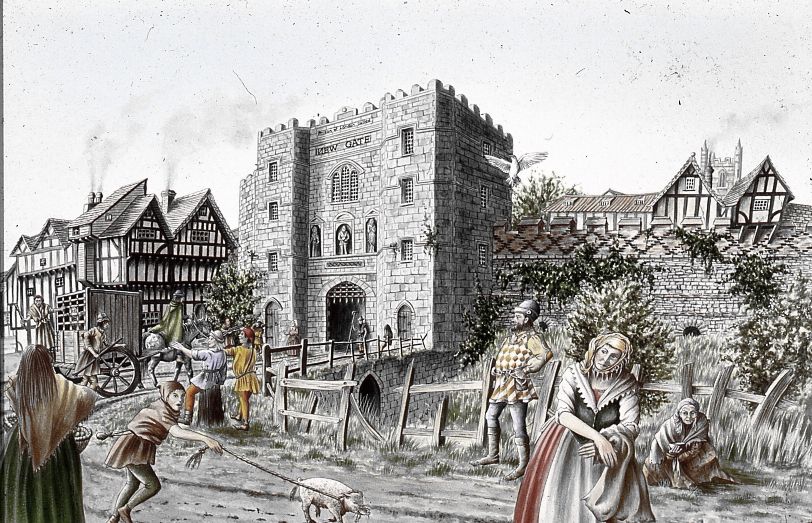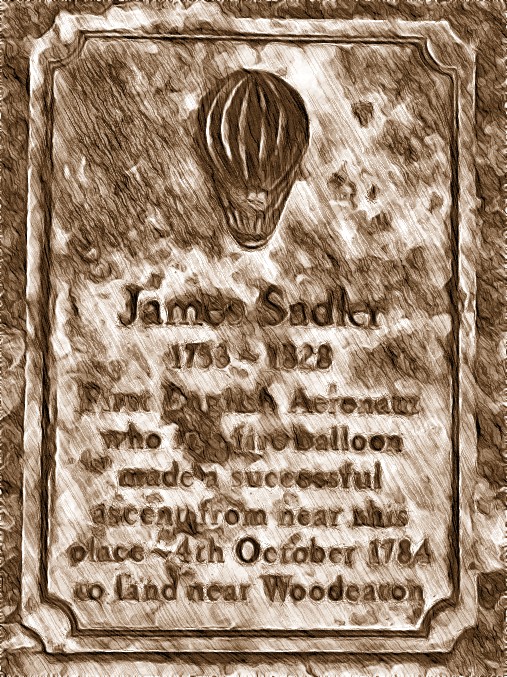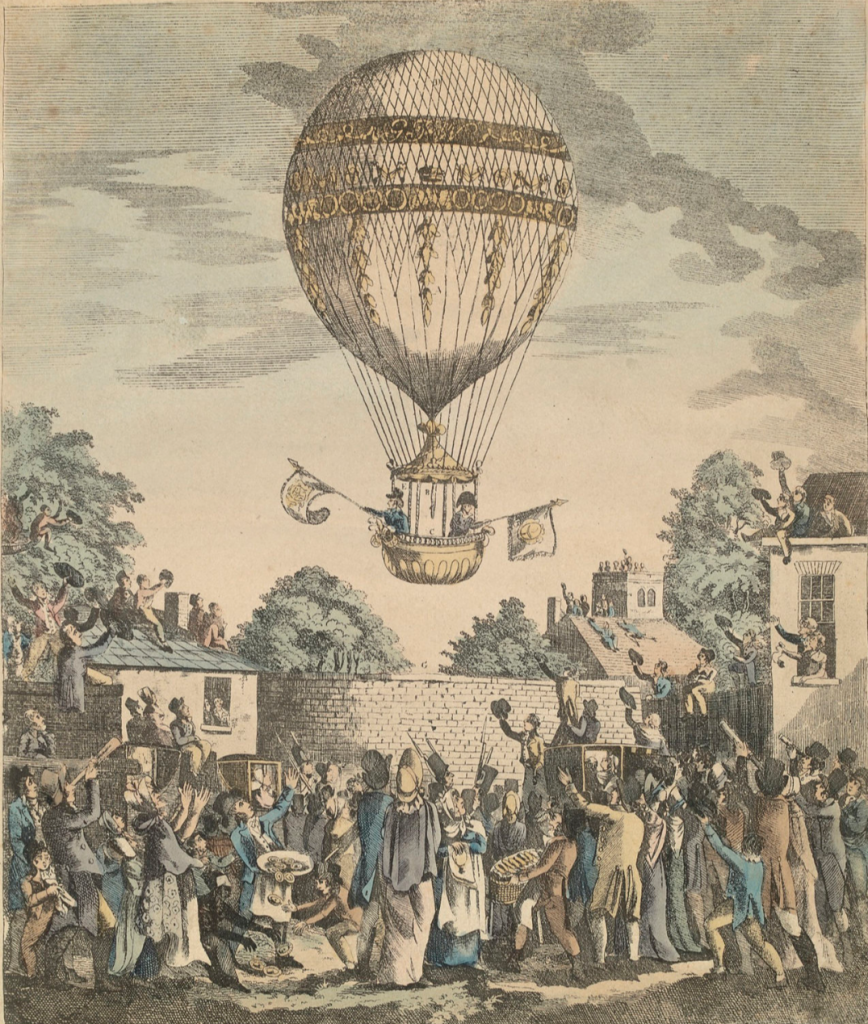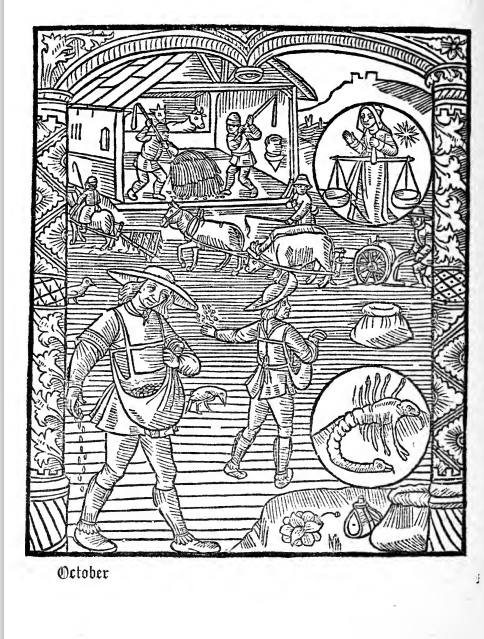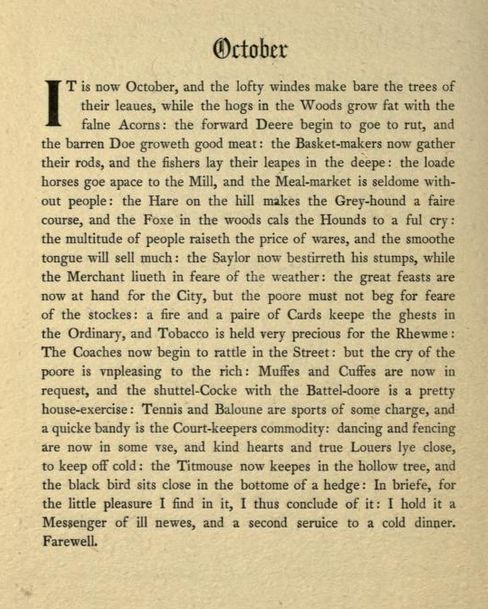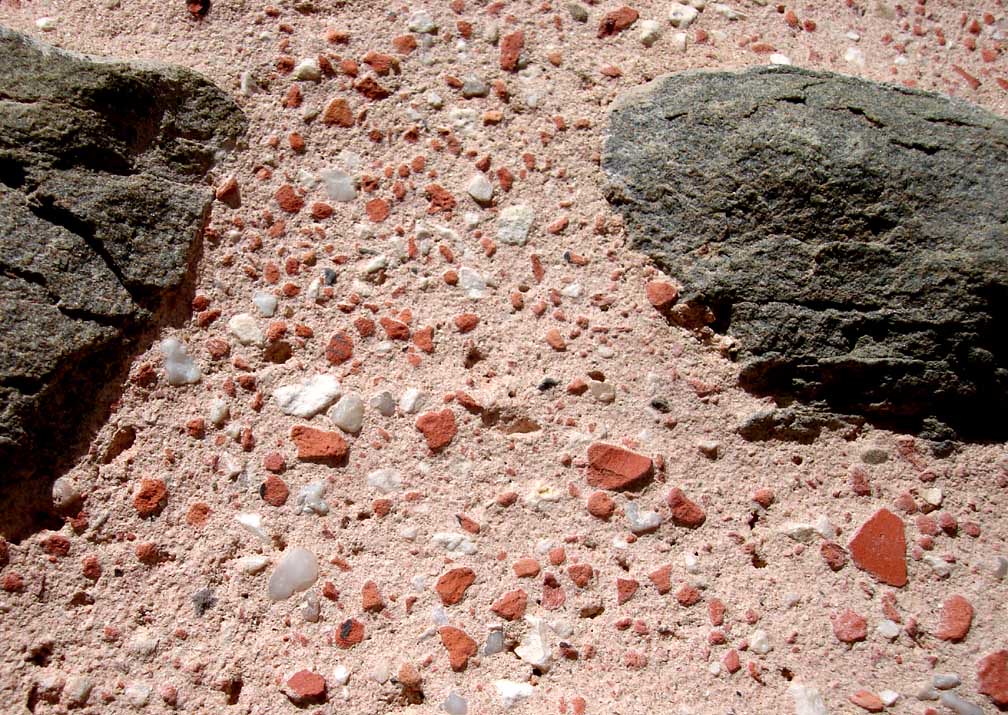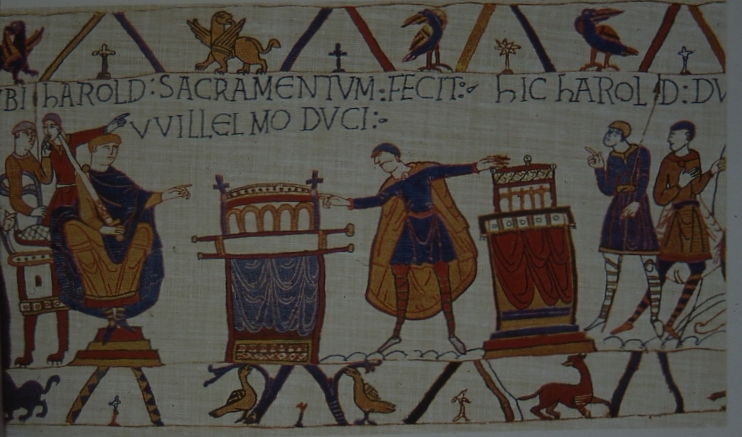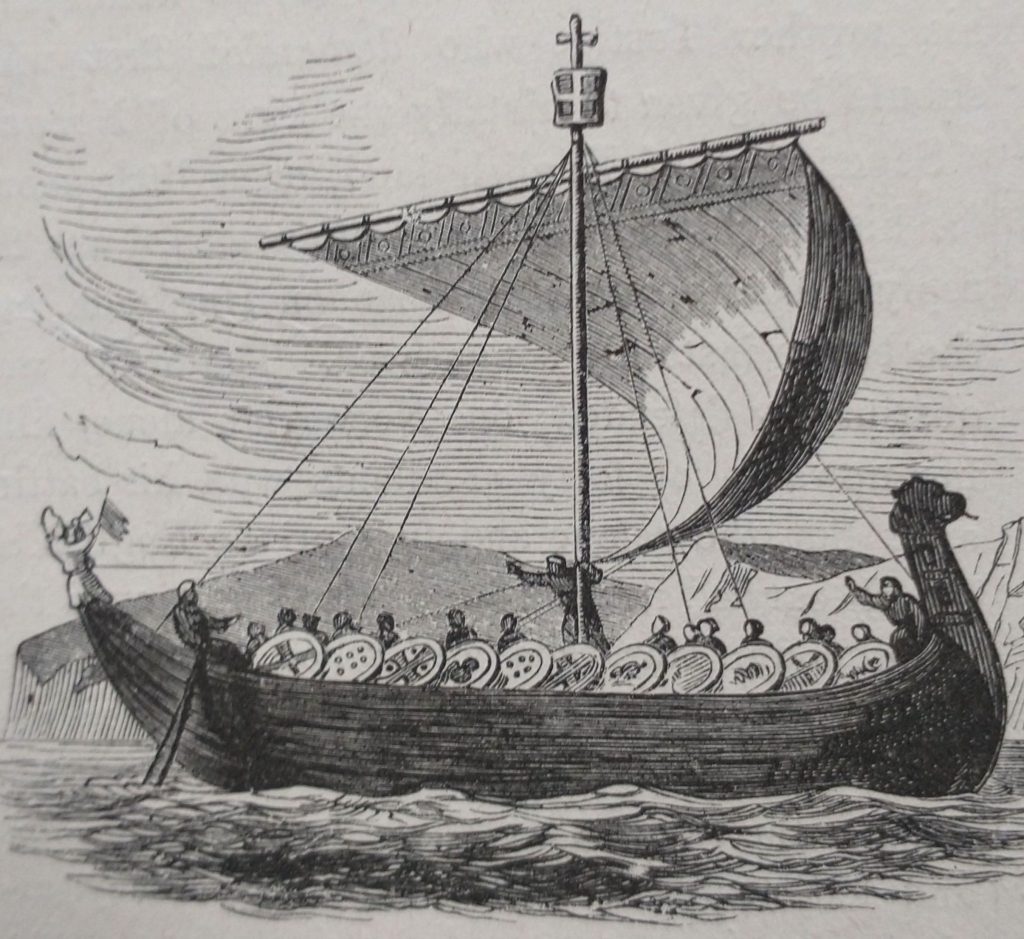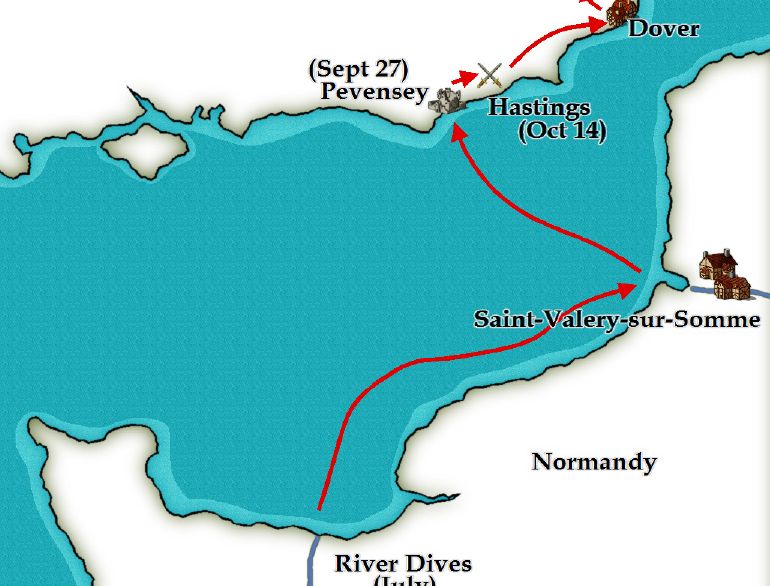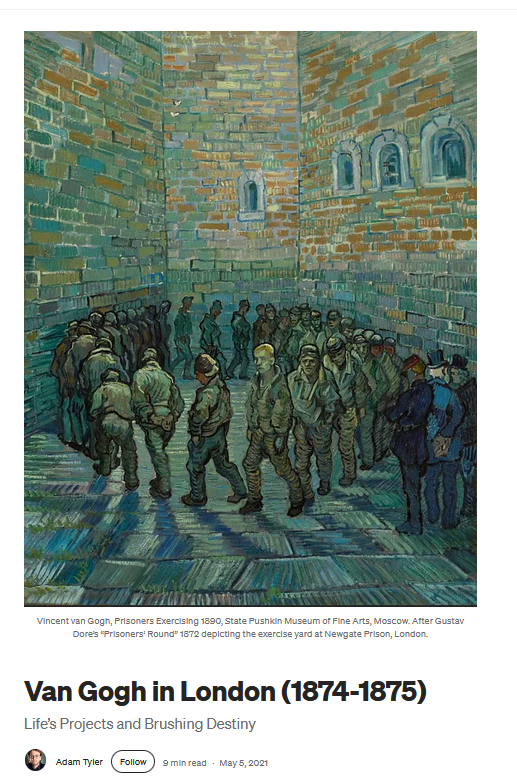
It’s not so well known that Van Gogh spent some time in London. Vincent spent three years in London, working as an Art Dealer in Covent Garden. He lived in Brixton, then the Oval. He was very impressed with London; its technology and culture. London was:
‘ a city lit by streetlights, a city powered by electricity and a city that relied on industrial power. It was impressive in all its accomplishments.’
To find out more about his experience in London look at this Tate website. https://www.tate.org.uk/art/artists/vincent-van-gogh-1182/seven-things-know-about-van-goghs-time-britain. The above quotation came from the site. For more details of Vincent’s time in London read Medium.
Van Gogh’s Newgate Prison Painting
This is where I got the image of Van Gogh’s painting of Newgate Prison above. Apart from sketches, this seems to be his only London painting. But Van Gogh did this painting well after his visit to London,. He copied Gustave Doré‘s engraving which you will see below. Further research tells me that he did this painting while in Saint-Paul Asylum. He was detained inside so could not continue his practice of painting outdoors, so copied from illustrations. He used a Héliodore Pisan copy of Doré‘s engraving. Van Gogh died a few months later, and this was one of the pictures that were displayed around his Coffin.
Vincent in Brixton
There is a play from 2002 called ‘Vincent in Brixton’, by Nicholas Wright, which I saw and very much enjoyed. It is scheduled to be performed in 2026 (14 March 2026 to 18 April 2026) at the Orange Tree, Richmond.
Letters to Theo
Vincent often wrote to his brother, Theo, about his experiences in London. This is a quotation I first found in ‘A London Year’ compiled by Travis Elborough and Nick Rennison. It provides a beautiful description of the London suburbs. This is a book well worth a place on a lover of London’s History’s bedside table.
Letter to Theo, October 8th 1876
In the City I also went to see Mr Gladwell and to St Paul’s. And from the City to the other end of London, there I visited a boy who had left Mr Stokes’s school because of illness, and I found him completely recovered, outside in the street. Then on to the place where I had to collect the money for Mr Jones. The suburbs of London have a peculiar beauty; between the small houses and gardens there are open places covered with grass and usually with a church or school or poorhouse between the trees and shrubbery in the middle, and it can be so beautiful there when the sun goes down red in the light evening mist. It was like that yesterday evening, and later I did so wish that you had seen the streets of London when it began to grow dark and the street-lamps were lit and everyone was going home, it was obvious from everything that it was Saturday evening, and in all that hustle and bustle there was peace, one felt, as it were, the need for and joy at the approach of Sunday. Oh those Sundays and how much is done and striven for on those Sundays, it’s such a relief to those poor neighbourhoods and busy streets. It was dark in the City, but it was a lovely walk past all those churches along the way. Close to the Strand I found an omnibus that brought me a long way, it was already rather late. I rode past Mr Jones’s little church and saw another in the distance where light was still burning so late. I headed for it and found it to be a very beautiful little Roman Catholic church in which a couple of women were praying. Then I came to that dark park I already wrote to you about, and from there I saw in the distance the lights of Isleworth and the church with the ivy and the cemetery with the weeping willows on the banks of the Thames.
To see this letter and his letters to Theo, follow look at this link.
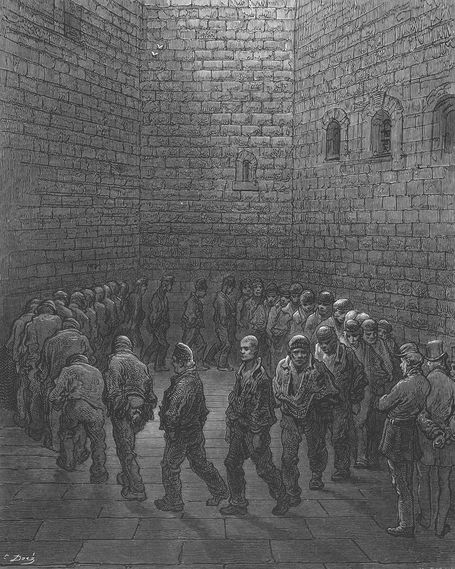
To see some of his London sketches please look at this web site.

First Published October 8th, 2025
